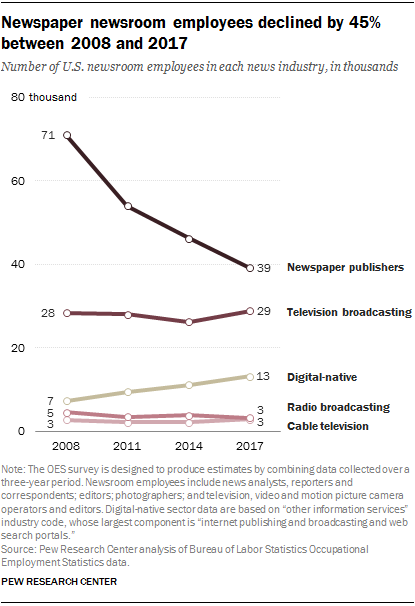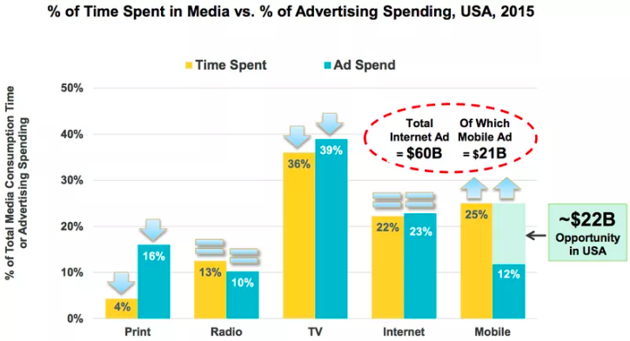
Another Newspaper Bites the Dust
We will get to the headline question in a moment. For now, though, we want to inform you that yet another one bites the dust, as they say.
The Youngstown Vindicator, a daily newspaper that just celebrated its 150th birthday a couple of days ago, will stop the presses at the end of August. The Brown family, who owns and operates the company, stated it tried to sell the company by using a newspaper business broker, but it only received two seriously interested parties and neither extended an offer. However, it is unclear whether the family also tried to sell some of its assets such as the brand and online intellectual property since there are several people who would be interested in continuing the online version of the brand. Understandably, given the staff is under a union contract, sometimes unions make it more complicated to engage in a divestiture. Fittingly, we learned about this news initially from the online version of The Business Journal Daily.
Nevertheless, this news is unsurprising. We have written, commented, and warned about the disruptions to come in the newspaper industry. Remember our blog from September 2009 titled “Stop the Presses,” which included that great infographic by Visually – alluding to the death of printed newspapers (see image below)?
Moreover, The Hill wrote about the trend last August in “Pittsburgh becomes largest US city without a daily print newspaper.”
“Pittsburgh will hold the distinction of being the largest city in the U.S. without a daily print newspaper after the city’s Post-Gazette informed readers it will cut its production schedule from seven days a week to five beginning this weekend.
The Post-Gazette, which launched 232 years ago and is one of the oldest newspapers in the country…”
More recently, Governing wrote about the decline of the Cleveland Plain Dealer in an article titled “When No News Isn’t Good News: What the Decline of Newspapers Means for Government” published in April 2019.
“Last month, after years of layoffs, the Cleveland Plain Dealer announced it was cutting even more jobs. A newspaper that had a unionized staff of 340 at the dawn of the century will drop down to 33.
What happened at the Plain Dealer isn’t unusual.
Around the country, major regional newspapers — including the Charlotte Observer, The Wichita Eagle, The Denver Post and The San Jose Mercury News — have shed 80 to 90 percent of their reporting and editing staffs. Between 2008 and 2017, newsroom employment dropped by 23 percent, according to the Pew Research Center. Already this year, more than 2,000 media jobs have been lost.”
The layoffs described above are depicted in the below chart by Pew Research Center, a nonpartisan American fact tank based in Washington, D.C. The chart, among others, is included in an article titled “Newsroom employment dropped nearly a quarter in less than 10 years, with greatest decline at newspapers,” published July 2018.

Newspaper Charts & Statistics
- Between 2000 and 2015, print newspaper advertising revenue fell from about $60 billion to about $20 billion, wiping out the gains of the previous 50 years.
- Digital newspaper industry revenue is forecast to grow by 9.8 percent annually from 2015 to 2020; whereas non-digital is forecast to experience a decline of three percent per annum during the same period.
- But lately, the collapse of newspapers is looking less like a steady erosion than an accelerating avalanche.

If you want to view some revealing charts about the newspaper industry, then reference the Newspapers Fact Sheet published by the Pew Research Center. Below are two samples illustrating the decline in advertising revenues and circulation of daily newspapers.
The Atlantic also has some fantastic charts and many references in an article from November 2016 titled “The Print Apocalypse and How to Survive It.” We particularly like the chart by Mary Meeker, the former Wall Street equity analyst (Internet companies) and venture capitalist (at Kleiner Perkins). By the way, Coventry League also referenced some of Mary’s charts about the U.S. economy way back in March 2011 in a bog titled “Remember The Off-Balance Sheet Shenanigans Of Enron?” that is still highly relevant today.

Business Model From the ‘30s – the 1830s
So, to address the headline question about your wanting a free subscription to your favorite newspaper, let’s revisit The Atlantic article mentioned previously:
Where do newspapers go from here? Back to readers, perhaps….
This future of the newspaper business would serve as a corrective, returning the industry to its distant past. In Tim Wu’s The Attention Merchants, he tells the story of the dawn of newspaper advertising. In the 1830s, the largest newspaper in New York City had a circulation of only 2,600, at a price of 6 cents, making it a luxury product for its time. Benjamin Day, a 23-year-old print shop owner, had the ingenious idea to sell a paper for a penny. That cent wouldn’t cover the cost of journalism and printing, but that was alright, because Day’s decided he would use the low price to attract an audience of readers that could be converted into a salable audience for advertisers. The customers were the product. His paper, the New York Sun, first appeared on September 3, 1833. Within two years, it had nearly 20,000 readers, the most of any paper in the city. Day “decisively demonstrated that a business could be founded on the resale of human attention,” Wu wrote.
So, it’s possible that some newspapers could offer their newspapers for free or close to free as Benjamin Day did back in the 1830s so as to increase readership…and by extension, ad revenues.
Another variant is to focus on investigative journalism, both locally and nationally. The latter could simply be publishing edgy, accurate, and revealing journalism from other sources. There are a lot of examples of independent investigative journalists that are being banned or excluded from mainstream media (social, print, and such). However, there’s a clear demand for this type of truth-seeking, unbiased content. One example is Project Veritas, which has published several revealing stories about corruption and collusion concerning some Big Tech, Big Media, and Big Government employees and officials. The below video is its most recent release titled “INSIDER BLOWS WHISTLE & EXEC REVEALS GOOGLE PLAN TO PREVENT ‘TRUMP SITUATION’ ” that is available on BitChute, a video platform that embraces free speech and uses peer-to-peer WebTorrent technology.
It certainly doesn’t help one’s cause to spew propaganda and biased opinions as it is certain to alienate a nontrivial (in this case, a majority) percent of the population.



I like the reference to Congresswoman Tulsi Gabbard about free speech and free press (journalists). She was on the Joe Rogan podcast a couple of times:
* Episode #1170 Sep. 2018 (1.5 million views): https://www.youtube.com/watch?v=oIb2lmHgd5s
* Episode #1295 in May 2019 (over 2 million views):
https://www.youtube.com/watch?v=kR8UcnwLH24